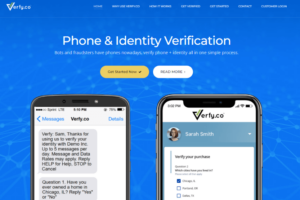Zelle is a popular digital payments network that enables users to send and receive money quickly and easily.
However, scammers have found a new way to target unsuspecting Zelle users through email scams that claim to be from Zelle’s support team.
The email typically informs the recipient that their Zelle account has a limit of $500 and they need to unlock it by receiving additional funds and then refunding them.
The email scam is designed to trick users into providing their personal information, including their Zelle login credentials, which can be used to access their bank account and steal their money.
It is important for Zelle users to be aware of this scam and to exercise caution when receiving emails claiming to be from Zelle’s support team.
Zelle’s official website provides a list of security tips to help users protect their accounts and avoid falling victim to scams.
Zelle Transfer Limits

Zelle is a popular money transfer service that allows users to send and receive money quickly and easily. However, there are certain limits to the amount of money that can be sent or received using Zelle.
Weekly Send Limit
The weekly send limit for Zelle varies depending on the user’s bank or credit union. If a bank or credit union offers Zelle, users should contact them directly to learn more about their sending limits. If a bank or credit union does not offer Zelle, users can still send up to $500 per week using the Zelle app.
Daily Transfer Limit
Zelle also has a daily transfer limit, which is set by the user’s bank or credit union. This limit can vary depending on the financial institution, so users should check with their bank or credit union to find out what their daily transfer limit is.
Per Transaction Limit
In addition to the weekly and daily limits, Zelle also has a per-transaction limit. This limit is also set by the user’s bank or credit union and can vary depending on the financial institution. Users should check with their bank or credit union to find out what their per-transaction limit is.
Dollar Amount Limits
Zelle transfer limits are typically based on the dollar amount of the transfer. While there is no specific dollar amount limit for Zelle transfers, users should be aware that their bank or credit union may have their own limits in place.
Increasing Limits
If a user needs to transfer more money than their Zelle limit allows, they may be able to request an increase in their limit. However, this will depend on the user’s bank or credit union, and they may require additional verification or documentation before increasing the limit.
Security and Privacy on Zelle
Zelle takes security and privacy seriously. The service uses industry-standard encryption to protect users’ personal and financial information. When you send or receive money using Zelle, your information is transmitted securely over the network.
Zelle also offers authentication and monitoring features to help make your payments more secure. For example, the service will verify your email address or U.S. mobile number before allowing you to send or receive money. Additionally, Zelle monitors transactions for suspicious activity and will alert you if it detects any potential fraud.
However, it’s important to note that Zelle cannot prevent all forms of fraud or scams. Scammers may attempt to trick you into sending them money using Zelle, often by posing as a friend or family member in need. If you receive a request to send money from someone you don’t know, or if the request seems suspicious, it’s best to decline the transaction and report it to Zelle or your bank.
To help protect your account, Zelle recommends that you never share your login credentials or personal information with anyone. Additionally, be wary of text messages or emails that ask you to click on a link or provide personal information, as these may be phishing attempts by scammers.
Does Zelle Send You an Email?

Zelle is a popular peer-to-peer money transfer service that allows users to send and receive money with just an email address or mobile phone number. One question that often arises among Zelle users is whether the service sends emails to its users.
The answer is yes, Zelle does send emails to its users. These emails may include important information about your Zelle account, such as notifications about received payments, reminders to complete a payment, and updates about your account balance.
However, it’s important to note that not all emails claiming to be from Zelle are legitimate. Scammers often send fake emails that appear to be from Zelle in an attempt to steal personal information or money from unsuspecting users.
To avoid falling victim to a Zelle email scam, it’s important to be cautious when receiving emails from Zelle. Here are a few tips to help you spot a fake Zelle email:
- Check the sender’s email address: Zelle emails should come from an official Zelle email address, such as [email protected]. If the email comes from a different email address, it may be a scam.
- Look for spelling and grammar errors: Many scam emails contain spelling and grammar errors that can make them easy to spot.
- Don’t click on links: If an email asks you to click on a link, be cautious. Scammers often use links to steal personal information or infect your computer with malware.
By being vigilant and following these tips, you can help protect yourself from Zelle email scams and ensure that you receive legitimate emails from the service.
How Do I Know if Zelle Email Is Real?
When receiving an email from Zelle, it is essential to verify its authenticity before taking any action. Here are some tips to help you determine if the email is real or a scam:
- Check the sender’s email address: Zelle emails should come from “[email protected].” If the email is from a different email address, it is likely a scam.
- Look for spelling and grammar errors: Legitimate Zelle emails are usually well-written and free of grammatical errors. If the email contains numerous spelling and grammar errors, it is likely a scam.
- Avoid clicking on links: Scammers often include links in their emails to trick you into giving away personal information or downloading malware. Always hover over the link to see if it leads to a legitimate Zelle website.
- Don’t give out personal information: Zelle will never ask you for your account number, password, or other personal information via email. If the email asks for this information, it is likely a scam.
If you are still unsure whether an email is legitimate, it is best to contact Zelle directly to verify. You can do this by visiting the Zelle website and clicking on the “Contact Us” link. From there, you can either call or email Zelle’s customer support team for assistance.
Remember, scammers are always looking for new ways to trick people into giving away their personal information. By following these tips, you can stay safe and protect yourself from Zelle email scams.
Scams Targeting Zelle App Users

Zelle is a popular peer-to-peer payment service used by many financial institutions in the US. Unfortunately, scammers have taken advantage of its popularity to target unsuspecting users. Here are some of the most common Zelle scams to watch out for:
Fake Zelle Emails and Texts
One of the most common Zelle scams involves receiving an email or text message that appears to be from Zelle. These messages often contain a link or attachment that, when clicked, can install malware on your device or lead you to a fake login page that steals your login credentials.
To avoid falling victim to this scam, always double-check the sender’s email address or phone number and never click on links or download attachments from unknown sources.
Overpayment Scams
Another common Zelle scam involves overpayment. In this scam, a buyer sends a fake check to a seller for an amount greater than the agreed-upon price. The buyer then asks the seller to deposit the check and send back the overpayment via Zelle.
Once the seller sends the overpayment, the fake check bounces, and the seller is left with a negative balance in their account. To avoid this scam, always verify the buyer’s identity and never accept overpayment.
Phishing Scams
Phishing scams are also prevalent in the Zelle world. In this scam, a fraudster sends an email or text message that appears to be from Zelle, asking you to click on a link and enter your login credentials.
To avoid falling victim to this scam, always verify the sender’s email address or phone number and never click on links or enter login credentials on unfamiliar websites.
Impersonation Scams
Impersonation scams involve a fraudster pretending to be someone you know and trust, such as a friend or family member. The fraudster then asks you to send them money via Zelle, claiming to be in a financial emergency.
To avoid this scam, always verify the identity of the person you are sending money to and never send money to someone you do not know or trust.
How Do You Tell if Someone Is Scamming You With Zelle?
Zelle is a popular peer-to-peer payment service that allows users to send and receive money quickly and easily. However, scammers have been known to use Zelle to defraud unsuspecting victims. Here are some tips to help you tell if someone is scamming you with Zelle:
1. Unexpected Requests
If you receive an unexpected request for money through Zelle, be cautious. Scammers may pose as friends, family members, or even companies to trick you into sending them money. Always verify the identity of the person or company making the request before sending any money.
2. Fake Emails and Texts
Scammers may also send fake emails or texts that appear to be from Zelle. These communications could appear legitimate, making it hard to tell that it’s not actually Zelle contacting you. Always double-check the sender’s email address or phone number and verify that it matches the official Zelle contact information.
3. Urgent Requests
Scammers may try to pressure you into sending money quickly by creating a sense of urgency. They may claim that a friend or family member is in trouble and needs money immediately, or that you have won a prize and need to pay a fee to claim it. Be suspicious of any urgent requests for money and take the time to verify the information before sending any funds.
4. Unusual Payment Methods
Scammers may ask you to use unusual payment methods, such as gift cards or wire transfers, instead of Zelle. Be wary of any requests to use non-traditional payment methods, as these are often signs of a scam.
5. Too Good to Be True Offers
Scammers may offer you a deal that seems too good to be true, such as a job that pays a lot of money for very little work, or a prize that you have won without entering a contest. Always be skeptical of offers that seem too good to be true, and do your research before sending any money or personal information.
By being vigilant and following these tips, you can help protect yourself from Zelle scams and keep your money safe.
Resolving Issues with Zelle
If you encounter any issues with your Zelle account, there are a few steps you can take to resolve them. The first thing to do is to check the Zelle website’s FAQ section to see if your issue is addressed there. If not, you can contact Zelle’s customer service team for assistance.
If you need to cancel a payment, you can do so as long as the recipient hasn’t yet accepted it. To cancel a payment, go to your Zelle activity page and select the payment you want to cancel. If the payment can be cancelled, you’ll see a “Cancel Payment” button. Click it and follow the prompts to cancel the payment.
If you’ve accidentally sent money to the wrong person, you can request a refund from the recipient. If the recipient agrees to refund the payment, they can do so through their Zelle account. If the recipient doesn’t agree to refund the payment, you can contact Zelle’s customer service team for assistance.
If you want to change the payment amount or cancel a payment that has already been accepted, you’ll need to contact Zelle’s customer service team for assistance. They may be able to help you resolve the issue.
If you have issues with your checking or savings account that are preventing you from using Zelle, you’ll need to contact your bank for assistance. Zelle transfers are processed through your bank, so any issues with your account may impact your ability to use Zelle.
To Summarize
Zelle is a popular money transfer service that allows users to send and receive money with just a few clicks on their mobile phone or computer. However, scammers have been taking advantage of this service to trick people into giving them money.
One of the most common scams is the Zelle account limit email scam. Scammers will send an email pretending to be from Zelle support team, claiming that the recipient’s account has a limit of $500 and asking for their email.
Once the victim responds with their email, scammers will send them additional money to “unlock” their account and ask if they can refund it once they do. However, the additional money is often stolen or fraudulent, leaving the victim with a negative balance in their account.
To avoid falling victim to this scam, users should be wary of any emails claiming to be from Zelle support team asking for personal information. Zelle will never ask for personal information such as passwords, social security numbers, or bank account information via email. Users should also be cautious when receiving unexpected money transfers or requests for money from unknown contacts.
If users suspect that they have been targeted by a Zelle scam, they should contact their bank or credit union immediately to report the incident and freeze their account. They should also report the scam to the Federal Trade Commission (FTC) and the Internet Crime Complaint Center (IC3) to help prevent others from falling victim to the same scam.
Overall, it is important for Zelle users to be vigilant and cautious when using the service to avoid falling victim to scams and fraudulent activity.




